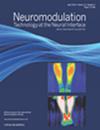Noninvasive Vagus Nerve Stimulation in Parkinson’s Disease: A Systematic Review
IF 3.5
3区 医学
Q2 CLINICAL NEUROLOGY
引用次数: 0
Abstract
Background
While pharmacologic interventions remain the mainstay of Parkinson’s disease (PD) treatment, alternative approaches such as vagus nerve stimulation (VNS) have drawn attention for their potential in managing PD symptoms.
Objective
We aimed to conduct a systematic review to comprehensively evaluate the safety and efficacy of VNS for motor and nonmotor symptoms of PD.
Materials and Methods
A systematic search was conducted across PubMed, Scopus, Cochrane Library, and Web of Science for relevant journal articles published up to October 2024. The findings were descriptively reported to evaluate the overall safety and efficacy of VNS in addressing both motor and nonmotor features of PD.
Results
A total of 12 journal articles with data from 287 participants were included. Ten studies reported that VNS significantly improved gait characteristics. Category fluency significantly declined in one study. Additionally, nonsignificant changes were observed in gastroenteric symptoms, fatigue, and both sympathetic and parasympathetic cardiac activity, with each of these outcomes reported in a separate study.
Conclusions
Noninvasive VNS demonstrated favorable safety and efficacy for gait impairments in patients with PD, indicating its potential as a versatile intervention capable of addressing multiple aspects of the disease pathology. However, further research is necessary to reveal the underlying mechanisms, optimize stimulation parameters, and assess the long-term safety and efficacy of VNS as a therapeutic strategy for PD.
帕金森病的非侵入性迷走神经刺激:系统性综述。
背景:虽然药物干预仍然是帕金森病(PD)治疗的主要方法,但迷走神经刺激(VNS)等替代方法在治疗PD症状方面的潜力引起了人们的关注。目的:我们旨在进行一项系统综述,全面评价VNS治疗帕金森病运动和非运动症状的安全性和有效性。材料和方法:系统检索PubMed、Scopus、Cochrane Library和Web of Science,检索截止到2024年10月发表的相关期刊文章。研究结果被描述性地报道,以评估VNS在解决PD的运动和非运动特征方面的总体安全性和有效性。结果:共纳入12篇期刊文章,数据来自287名参与者。10项研究报告了VNS显著改善步态特征。在一项研究中,类别流畅性显著下降。此外,胃肠症状、疲劳以及交感和副交感心脏活动均未观察到显著变化,这些结果均在单独的研究中报告。结论:无创VNS对PD患者的步态障碍显示出良好的安全性和有效性,表明其作为一种多功能干预手段的潜力,能够解决疾病病理的多个方面。然而,还需要进一步的研究来揭示其潜在的机制,优化刺激参数,并评估VNS作为PD治疗策略的长期安全性和有效性。
本文章由计算机程序翻译,如有差异,请以英文原文为准。
求助全文
约1分钟内获得全文
求助全文
来源期刊

Neuromodulation
医学-临床神经学
CiteScore
6.40
自引率
3.60%
发文量
978
审稿时长
54 days
期刊介绍:
Neuromodulation: Technology at the Neural Interface is the preeminent journal in the area of neuromodulation, providing our readership with the state of the art clinical, translational, and basic science research in the field. For clinicians, engineers, scientists and members of the biotechnology industry alike, Neuromodulation provides timely and rigorously peer-reviewed articles on the technology, science, and clinical application of devices that interface with the nervous system to treat disease and improve function.
 求助内容:
求助内容: 应助结果提醒方式:
应助结果提醒方式:


